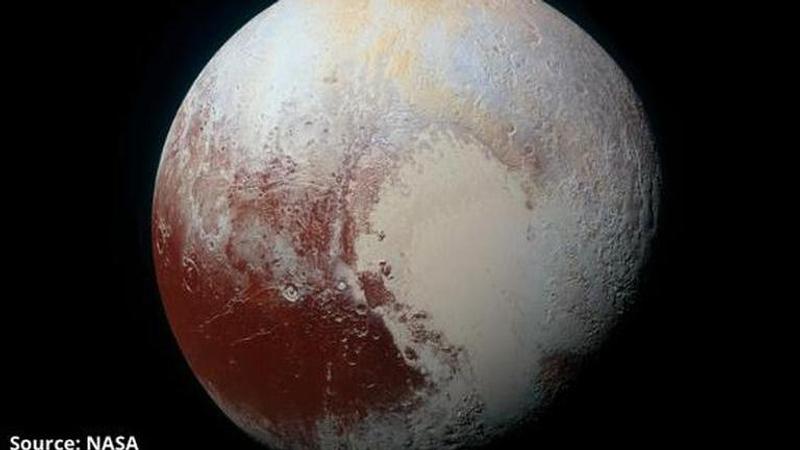Published 22:05 IST, June 23rd 2020
Does Pluto have an underground ocean? Find out if the frigid planet can sustain life
Pluto is a frigid little world inhabiting our solar system but recently scientists from NASA are speculating that it might have an underground ocean. Read more

Pluto is a dwarf planet inhabiting our solar system. It was discovered in 1930 by Clyde Tombaugh an astronomer from the United States. Though Pluto is now famously frigid world might possess an underground ocean. Continue reading this article to find, "Does Pluto have an underground ocean?”
Image Credit - NASA
Does Pluto have an underground ocean?
A new study has found that Pluto may have started off as a hot world, formed violently and rapidly. The results also indicated that Pluto might even have an underground ocean, from very early on in its life. Hence, this will improve its chances of supporting life. A study led by Carver Bierson, a planetary scientist at the University of California, Santa Cruz, revealed that although we look at Pluto as an infertile frigid planet, with a temperature of about 45 Kelvin which is minus 380 degrees Fahrenheit, and minus 228 degrees Celsius. The Geology recorded on Pluto’s surface speaks otherwise.
Image Credit - NASA
Earlier Scientists assumed that Pluto originated from the cold icy rock clumping together in the Kuiper belt. The Kuiper belt is a ring of objects beyond Neptune’s orbit. However, there is evidence that Pluto currently possesses a liquid ocean beneath its thick frozen shell. Researchers are suggesting that this subsurface ocean developed long after Pluto formed. The ice melted due to heat from radioactive elements in Pluto's core and gave rise to an ocean.
However, the recent geological formations studied on Pluto’s surface claim that Pluto had a rapid and violent origin instead of a cold and quiet one. This potentially warmed the interior enough to melt the ice and form a subsurface water ocean. As per a Science and space portal, the researchers analysed these extensional features on Pluto's surface. Water expands as it freezes, hence as Pluto's interior cooled, it stretched the surface and gave rise to surface stretch marks.
Image Credit - NASA
Scientists were able to compare the geological observations of Pluto captured by NASA's New Horizons spacecraft. It flew by the dwarf planet in 2015, with various models of Pluto's origin and evolution. Researchers have claimed that extensional features on Pluto's icy surface like cracks in its shell, and an enigmatic system of ridges and troughs suggest Pluto had a hot start.
Hence, this research opens doors to many other possibilities. If one dwarf planet in the Kuiper belt can possess an underground ocean, due to this hot and violent formation, so can others. So many Eris, Makemake and Haumea, may also possess subsurface oceans ever since they formed. This speaks volumes about the possibility of potential habitability of these distant icy worlds.
Researcher Bierson said to the space news portal, that at this point, we are not fully aware of the ingredients or recipe needed for life to emerge on any world. Hence, we still think liquid water is an important ingredient. And this study suggests Pluto has had that for a very long time.
Is Pluto a Planet?
Pluto is a not a planet, it's in fact a dwarf planet, which takes 248 earth years to make complete one revolution around the sun. In actuality, Pluto is 40 times farther from the Sun than Earth is. For this very reason, Pluto has not completed a single revolution around the sun and was demoted to a dwarf planet in August 2006. Clyde Tombaugh discovered Pluto in 1930. Venetia Burney an 11 year old girl from England named Pluto the same year. As per NASA’s reports, Pluto is not very big. NASA claims that is only half as wide as the United States and it is even smaller than the Moon.
Updated 22:05 IST, June 23rd 2020






